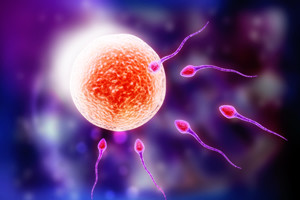
In vitro fertilization (classical IVF) is one of the most commonly used techniques at MC Afrodita. The numerous successful procedures we enjoy rank us among the best in the country. Our achievements are fully comparable with in vitro centers from all over the world.
Why are our results so good?
We believe that our success is due to a holistic approach to our patients, taking into account the influence of emotional and social factors, as well as personal characteristics, not just the symptoms of the problem. This approach is combined with modern modern techniques.
When we treat couples or individual patients who want to have a child, we combine the latest effective in vitro technologies with a personal approach.
IVF is used for certain types of reproductive problems such as:
- Couples with unexplained infertility
- Women with reduced ovarian reserve, endometriosis, or blocked fallopian tubes
- Men with abnormal semen parameters
When a woman begins IVF treatment, she is prescribed hormonal medications specific to her reproductive characteristics. These medications stimulate the ovaries to produce several mature follicles at the same time, with the hope that each of them contains an egg. This process is monitored regularly through ultrasound examinations and blood sampling to ensure that the ovarian stimulation process is progressing appropriately.
Once we have fully mature follicles in the ovaries, we proceed to retrieve the eggs through a clinical procedure performed by our in vitro specialist. Follicular puncture is done using an ultrasound- guided needle that passes through the vaginal wall into the ovary, where the eggs are collected. The eggs are immediately sent to the embryology laboratory. The procedure lasts from 5 to 20 minutes.
On the same day the eggs are collected, the partner gives a semen sample. It is treated with media in order to isolate the most motile and normal-looking spermatozoa to fertilize the eggs. The processed sperm and eggs are placed together in the embryology laboratory overnight.
The next day, the eggs are checked for signs of fertilization. Those that show normal fertilization are left in the lab for another 24-96 hours. Fertilized eggs are now called embryos. The development of the embryos is monitored, and the couple is informed of their progress.
Once we determine that the embryos are ready to be returned to the uterus, we will schedule a day and time for this. Before the procedure, you will discuss with our in vitro specialist how many embryos to return (transfer). Transfer is one of the most delicate clinical procedures. It is done with a fine catheter with the embryo(s) that passes through the vagina and cervical canal into the uterus. The procedure lasts no more than half an hour, and most women do not experience discomfort.
After the transfer, all embryos that have not been returned will be evaluated for their suitability to be frozen. Thus, if necessary, they could be used by the couple for a future transfer.
The success rate depends on many factors and may vary depending on the particular circumstances. Your likelihood of success will be explained to you by the IVF specialist after your medical history has been reviewed.
